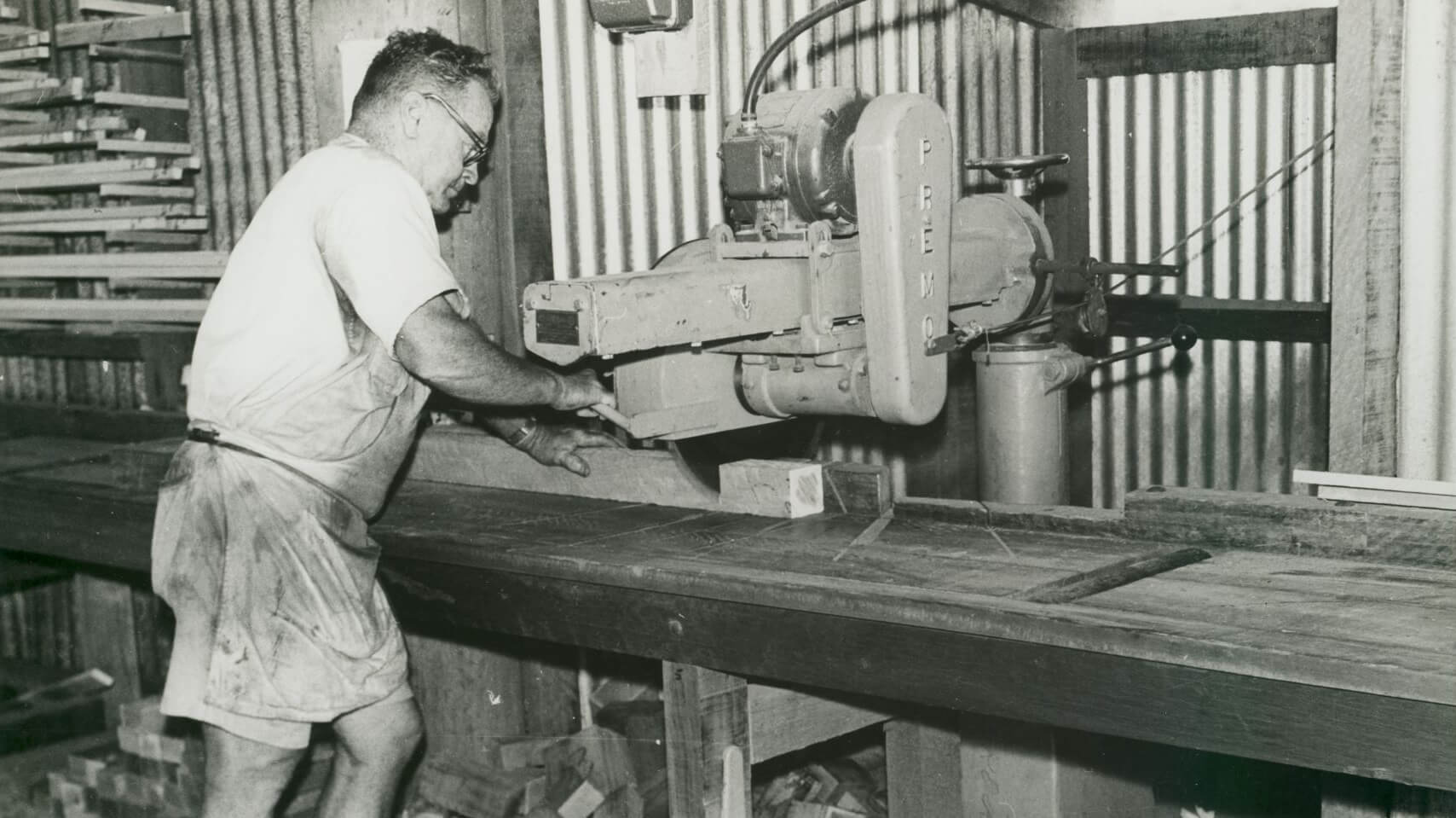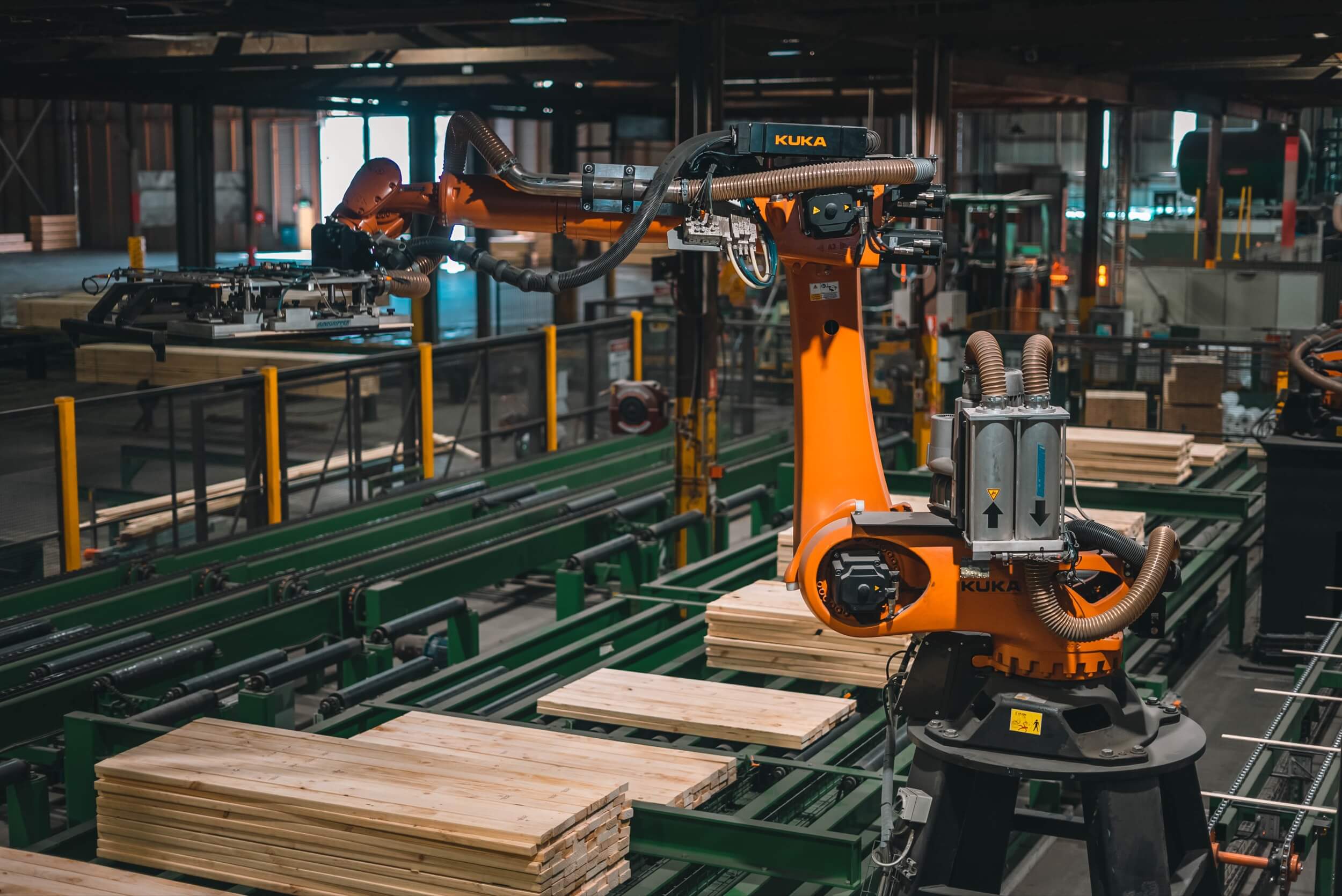“It’s our duty to keep going as long as the bank will let us.”
One Saturday, with not one order on the books, not even for a load of firewood, Lambert Hyne watched his father H.J. closing the big white entrance gates to the Maryborough sawmill.
Knowing the business’ dire circumstances, he looked to his father and asked what they would do on Monday.
H.J. pointed out the workers who had passed through the gates heading home and told Lambert most of them had worked for his father R.M.
“It’s our duty to keep on going as long as the bank will let us,” he said, giving Lambert a lesson in corporate and social responsibility that he would never forget.1
By 1935, though, a reduction of rail freight tariffs for pine and a rebate of royalties changed the timber industry for the better.
Soon all machines, happily, were back in full swing and the labour force had increased three-fold, and the gates remained open until 2006, when the mill was eventually sold with Hyne managing its operation until 2007. The site remains operational to this day.
The war years
Hardwood was the most common building product during the period marred by the beginning of two world wars, chosen for its strength.
“You couldn’t build a house out of native softwood such as red cedar, it would have fallen down,” said Peter Hyne, whose grandfather Lambert Hyne led the business from 1936 following the death of H.J. Hyne. “In this era, the whole house was built of hardwood timber, with the softwood used only for internal linings.”
Timber was considered a strategic material during the war years. Due to threat of enemy military action during World War II, it became necessary for Hyne to move its operations to a less prominent location and the first country hardwood sawmill was created in Brovinia in 1942.
This era also marked a changing attitude towards forestry conservation, with issues such as the overcutting of timber during World War II, log shortages and over-foresting, compounded by the “great wastage” from farming and railway clearing, of the early years of the timber industry.
1 Hynesight: A history of a timber family in Queensland, published 1980.






















